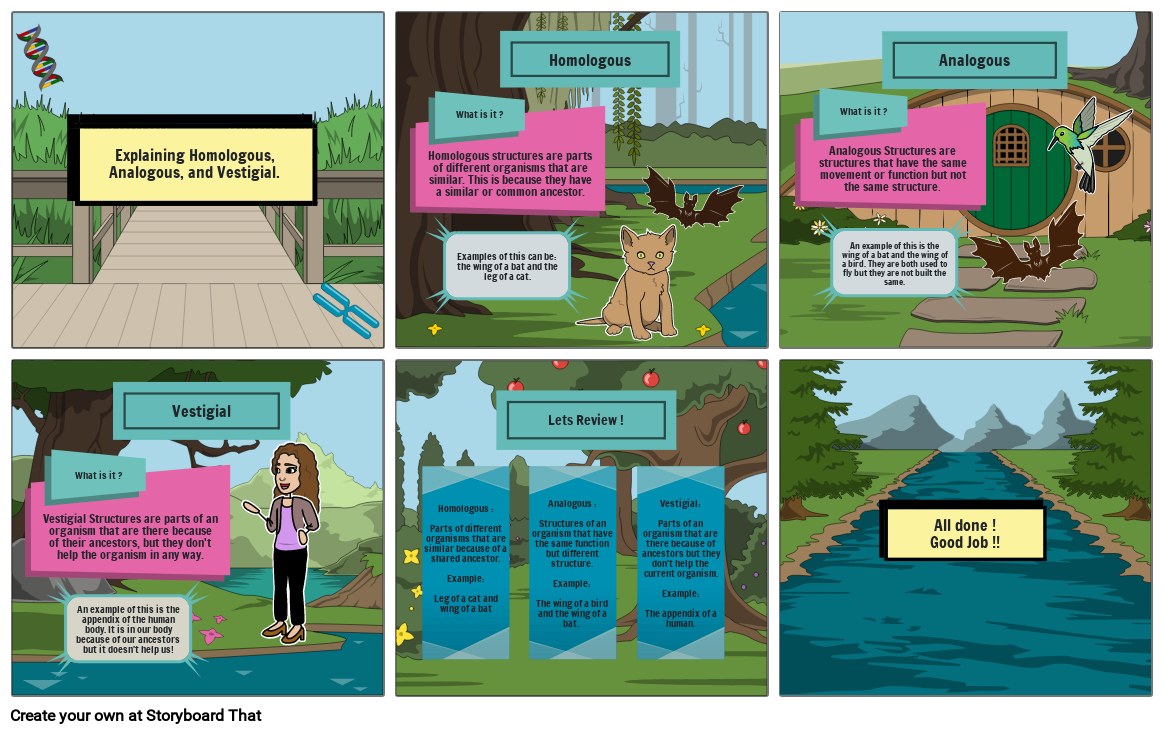Science

Storyboard Text
- Explaining Homologous, Analogous, and Vestigial.
- What is it ? Homologous structures are parts of different organisms that are similar. This is because they have a similar or common ancestor.
- Examples of this can be: the wing of a bat and the leg of a cat.
- Homologous
- What is it ? Analogous Structures are structures that have the same movement or function but not the same structure.
- An example of this is the wing of a bat and the wing of a bird. They are both used to fly but they are not built the same.
- Analogous
- What is it ? Vestigial Structures are parts of an organism that are there because of their ancestors, but they don't help the organism in any way.
- An example of this is the appendix of the human body. It is in our body because of our ancestors but it doesn't help us!
- Vestigial
- Homologous :Parts of different organisms that are similar because of a shared ancestor.Example:Leg of a cat and wing of a bat
- Lets Review !
- Analogous :Structures of an organism that have the same function but different structure.Example:The wing of a bird and the wing of a bat.#160;
- Vestigial:Parts of an organism that are there because of ancestors but they don't help the current organism.Example:The appendix of a human.
- All done !Good Job !!
Over 30 Million Storyboards Created
No Downloads, No Credit Card, and No Login Needed to Try!
